
Who Were
The Cambs
The Cambs
at War
1/1st Btn 1914-1919
1914 - 1/1st Overview
1915 - 1/1st Overview
1915 - St Eloi
1915 - Fosse Wood
1916 - 1/1st Overview
1916 - The Schwaben
1916 - St Pierre Divion
1917 - 1/1st Overview
1917 - St Julien
Insignia, Medals & Books
Remembering The Cambs
Biographies
About Us &
This Site
"Mopping Up" in Epehy & Taking Ockenden Trench – 18th to 30th September 1918
In the afternoon of September 17th the 1/1st Battalion, Cambridgeshire Regiment gathered near the village of Nurlu. After a hot meal, Major-General Harold Whitla Higginson DSO, G.O.C. 12th Division, addressed the men. The following day the Division was to take part in a large-scale attack on an outpost section of the Hindenburg Line – the heavily fortified German main defence line. The Cambridgeshires were tasked with clearing the ruined village of Epehy, which, as it lay just in front of the line, had been turned into a fortress with numerous bunkers, fortified cellars and a rabbit warren of trenches and tunnels. Taking the village would not be an easy task, especially as it was known to be garrisoned by well-trained and highly motivated men from the Bavarian Alpine Corps.
The small French village of Epehy was no stranger to the bitter fighting that had raged across the surrounding land. Taken back by the British in 1917 it had been heavily fortified by them, including the construction of multiple concrete observation towers and bunkers, called posts. The Germans then swept back over the area during the March 1918 Spring Offensive, taking the village back and assimilating the British defences into their own as well as constructing numerous new ones. By mid September 1918, when the Allied advance finally approached Epehy, the village was in total ruins with no buildings left intact.
As was so often the case for the Cambridgeshires, the plan positioned them on the flank of their division’s attack, with the neighbouring 58th (London) Division to their left. In the ground between the two divisions stood one of the strongest defensive positions in the village – Fisher's Keep. This was a British bunker and HQ dugout that had been adapted and reinforced by the Germans. It was protected by several fortified machine gun positions and a connected network of trenches, cellars and tunnels. The rabbit warren of tunnels and old cellars ran through most of the village, linking up the various posts, MG nests and blockhouses.
Lt Col Clayton DSO, understanding the magnitude of the task facing his men, went to great length to make sure that all ranks knew their objectives. All officers and NCOs spent considerable time studying maps, aerial photographs and even a large-scale model of the village. However, with men from three separate brigades involved in the attack on the village, there were countless potential complications, all out of Clayton’s control, that could easily become problems during the fighting.
As with the attack on Nurlu earlier in the month, the night-time journey to the assembly positions was a difficult and miserable affair, but this time it was not enemy gas impeding visibility but torrential rain and gusting wind. Eventually the soaked battalion reached their assembly positions, with A and B Coy directly west of the village and C and D Coy to the southwest. At 5.20am all along the line the guns commenced their bombardment. Instantly the German artillery and machine guns returned fire and what had been a quiet night apart from the wind and the rain, in a few seconds turned into a deafening thundering cacophony.
As soon as the artillery bombardment started the men advanced into the gloom and pouring rain. By 6am visibility had improved slightly but it was not clear how things were progressing. The 35th Brigade’s attack was meant to be supported by two tanks from the 2nd Battalion, Tank Corps, however mechanical issues prevented one from arriving and the second was knocked out by enemy fire within minutes of the advance starting. As such, the infantry advanced without this pivotal support.
Both the 9/Essex and 7/Norfolk, with their objectives on the far side of the village, initially advanced well. Unfortunately for the Cambs both these battalions lost direction slightly in the darkness and most of them bypassed the village entirely. Therefore, what is written down as a “mopping up” task for the Cambs in the various official reports and documents, was now actually taking and clearing a large section of a heavily fortified village including numerous concrete bunkers and posts.
Casualties in A Coy, who were attacking the north of the village from due west, mounted quickly and soon every officer in the Coy had been killed or incapacitated. The company commander, Capt Alec Johnson, who had just won the Military Cross for his gallantry at Nurlu, was killed instantly when hit by shrapnel in the back of his head. Despite the loss of their officers, the men pushed on, urged forward by various NCOs and experienced men. One NCO, Sgt Fred Read DCM, led the remains of his platoon in an attack on Fisher's Keep. This small group of men, numbering only 14, made significant progress towards the fortification, but before long the weight of enemy fire and counterattacks pushed them back.
Both C and D Coys, who entered the village from the southwest, advanced slowly. The lack of tank support and the fact that the two assaulting battalions had bypassed the village was having a serious effect on their progress. Half of C Coy, like the Essex and Norfolks ahead of them, drifted too far to the east during their advance and found themselves caught up in bitter fighting around the railway embankment southeast of the village. D Coy, soon supported by half of B Coy, slowly fought their way through the tangled ruins and piles of rubble that had once been houses. The men found themselves in a confusing network of ruins, cellars, walled gardens, trenches and gun pits hidden in the rubble. With growing casualties the men slowly advanced, killing or capturing the garrison.
After hours of this bitter, hellish, close combat, much of the village was still held by the Germans. In a cruel twist, one of the British tanks that had been supporting the attack on Peiziere, just north of Epehy, turned south to assist with the attack. Entering the village, the tank started firing on friend and foe alike, unaware of what progress had actually been made by the 35th Brigade. This caused considerable confusion before the situation could be rectified and stabilised. Adding to this, a tank from the attack south of Epehy lost direction and turned north, entering the village from the south and, mirroring the events to the north, also opened fire on the men of the 35th Brigade. It was eventually stopped by a gallant Cambs NCO who was able to make contact with the crew and then put the tank to good use silencing several of the enemy machine guns.
By mid afternoon, the hours of nightmare fighting in the village, described by one soldier from D Coy as “a nest of ******* surprises”, was taking its toll on officers and men alike. A Coy were scattered around the north of the village and Fisher's Keep was still in German hands. D Coy and part of both B and C Coys were spread out around the middle of the village and the rest of C Coy were now isolated and surrounded around the embankment to the southeast. Lt Col Clayton DSO, recognised that his depleted and weary battalion was not enough to subdue the remaining defences. Two Coys from 5/R Berks were sent up as reinforcements along with additional trench mortars. With the assistance of these fresh troops the majority of the key positions in the village were taken, however despite several attempts Fisher's Keep remained defiant.
With the situation in the centre of the village relatively stable, the Cambridgeshires were able to regroup. The clusters of men from A Coy dotted around the north of the village were located and concentrated. B Coy had men in reserve and the others were garrisoning several of the old British posts. Half of C Coy was also holding posts, but there was still no sign of the other half that had drifted to the south. D Coy had some men in the village but the bulk of the Coy was moved to the south eastern edge of the village. Fisher's Keep was finally silenced and taken at 7.45pm after further attacks by men from the neighbouring brigade.
By nightfall groups of Germans were still being found hidden in the ruins and cellars, one group had even managed to reoccupy Cropper Post on the southeast corner of the village. D Coy quickly stormed the post again and slowly the fighting in the village died down. Under the cover of darkness the Cambridgeshires took stock of their losses, brought up supplies and the battered remnants of A Coy moved back into reserve.
Orders came through in the early hours that the Battalion was to take part in a further attack. The enemy, having now lost the village and the trenches just to the east, had pulled back to a trench line that crosses the shallow valley east of the village. The attack called for a composite force from various brigades to push east, clearing this trench line. Given the short time to plan and the condition of many of the battalions involved, it was far from ideal. For the Cambridgeshires it would mean a 500-yard advance in the open before they had even reached the current British front line, followed by an 800 – 1000 yard advance to the enemy trenches known as Room Trench and Ockenden Trench.
Despite the exhausted state of the many of the men, preparations were made and by late morning they were ready to advance. Half of C Coy were still missing, so the attack was to be made by B and D Coy along with the remnants of C Coy. Predictably there were complications and one of the attacking battalions did not arrive, while another, only minutes before the start time, was suddenly ordered to not advance. On receiving this order, Clayton, knowing how isolated this would make his men, refused to halt their advance. At 11am, covered by a weak artillery bombardment the men started their long advance. Under increasing German machine gun fire the men made their way forward, until, in the face of heavy machine gun fire and thick barbed wire, the Cambridgeshires went to ground 150 yards short of the German trenches.
For much of the day, the attacking Cambridgeshires, now pinned down just short of the German trenches, were unable to move. British artillery was moved up and these guns were able to fire down the German line, causing heavy casualties among the defenders. While this was going on, the missing half of C Coy, having now been reached by men advancing south of the village, finally returned to the Battalion HQ. After 30 hours, cut off and surrounded, they were in no fit state to assist with the current attack and were moved back for a rest.
By 6pm, enemy were seen to be withdrawing from the positions off to the north. Seizing this opportunity, Lt Col Clayton rushed forward in order to get his men advancing again. Gathering up various Cambridgeshires and Northants as he advanced, they quickly pushed forward to their original objective. When they reached the trench line they found they were not abandoned as expected and were still defended by a rather startled garrison - somehow these defenders had not spotted Clayton’s sudden advance. After a short and bloody fight a section of Ockenden Trench was finally in British hands.
Clayton, on returning to his HQ now knew that the attacking Coys were completely devoid of experienced officers, so he sent word for Capt Dunlop MC to be brought up from the battle surplus. Captain Archie Dunlop had recently arrived from England, having recovered from his wounds sustained during the fighting at St Julien in July 1917. A popular and experienced officer he was just the man needed to get the German trench line cleared, having gallantly done just that during the capture of the Schwaben Redoubt in the summer of 1916 – an action that saw him awarded the Military Cross. Sadly Captain Dunlop’s part in the attack was short-lived. As he moved up to Ockenden Trench in the evening gloom, he approached a section still held by the enemy and was mortally wounded. Once word reached Battalion HQ a group of men volunteered to go out and rescue him, however his wounds were severe and he sadly succumbed to his wounds the next day.
Knowing that the situation was critical and that his men clinging on to the section of Ockenden Trench still needed an experienced leader Clayton sent up Capt Warren, the exhausted officer from C Coy who had just returned from being cut off. Throughout the night Capt Warren, in his own unique style - clutching a German Luger in each hand, was able to gather up many of the scattered men, consolidate the position and, as soon as it was light, push further down the German trench line.
For the next four days, the now heavily depleted Battalion held their sections of Room and Ockenden Trenches, slowly expanding forward with a series of posts. Further attacks were made off to either flank by other battalions and slowly the line moved forward. Finally late in the evening of September 23rd, the exhausted Battalion was relieved and moved back to the other side of Epehy for a rest.
Losses during the attack on September 18th and over the subsequent five days, while heavy, could have been considerably worse given the task left to the Battalion. Nearly 50 officers and men had been killed and over 180 wounded, a further 8 men were missing later confirmed as having been taken prisoner. Among the casualties were a number of the most experienced officers and NCOs in the Battalion – men that it would be nearly impossible to replace. The pace of fighting offered little time to rest and on September 26th the Battalion moved back into the front line, this time around Little Priel Farm, 3000 yards east of Epehy. Although they did not take part in any further attacks during this time in the line, heavy enemy shelling caused further casualties. Their location in the line did however give the Cambridgeshires an incredible view of the attack made by several American Divisions on the Hindenburg Line, just south of the Battalion's position.
On September 30th the Cambridgeshires were finally moved back, 3000 yards west of Epehy, in preparation for leaving the area the following day. Ahead was the chance for a short rest before they would once again be moving up, following the advance east. While the Hindenburg Line was now breached, there was still fighting to be done and the War was far from over.
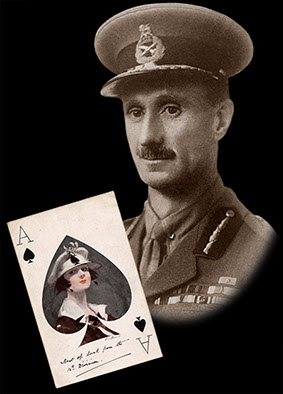
Major General Harold W. Higginson CD DSO ADC, G.O.C. 12th Division during the attack on Epehy.
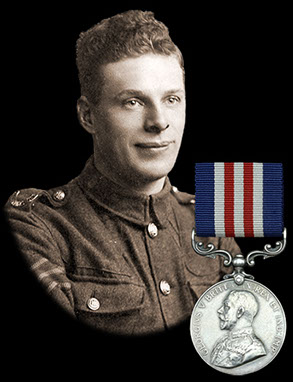
Sgt Fred Read DCM, awarded the MM for his command and leading his men against Fisher's Keep in the morning of 18th.
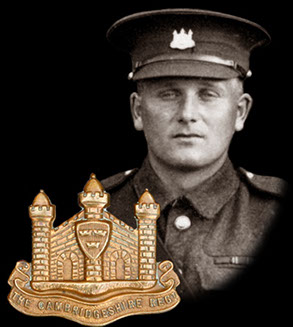
CSM Bernard Howard DCM, commanded half of C Coy for much of the fighting at Epehy, he was badly wounded on the 19th.
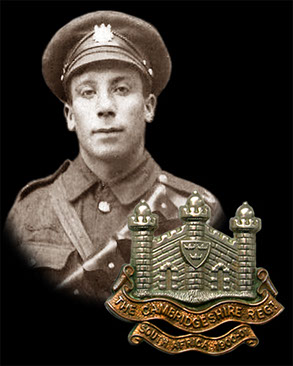
Cpl William Jennings MM, killed during the fighting at Epehy on September 18th.
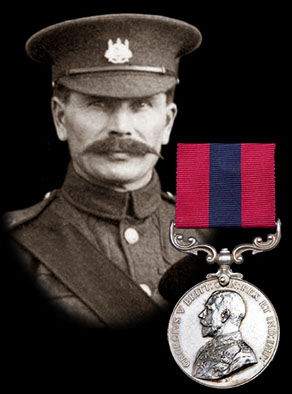
CQMS John Mansfield, awarded the DCM for his gallantry and leadership at Epehy.
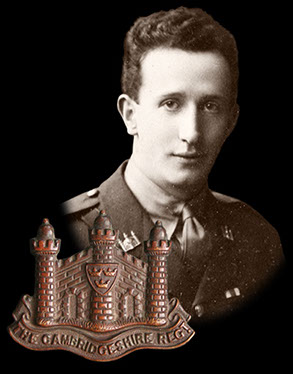
Capt Archie Dunlop MC, mortally wounded while moving up to Ockenden Trench.
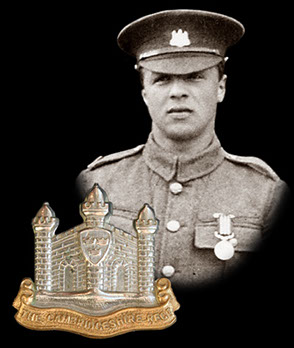
Sgt Albert Smith MM, from Bourn, killed during the shelling on September 27th.

This site went live on the 14th February 2015 to mark 100 years since the 1/1st Cambs went off to war.
WE WILL REMEMBER THEM
Email us: cambsregt@gmail.com
Copyright 2015, 2016, 2017, 2018, 2019 by Felix Jackson. The information and images on this site should not be reproduced without prior permission.